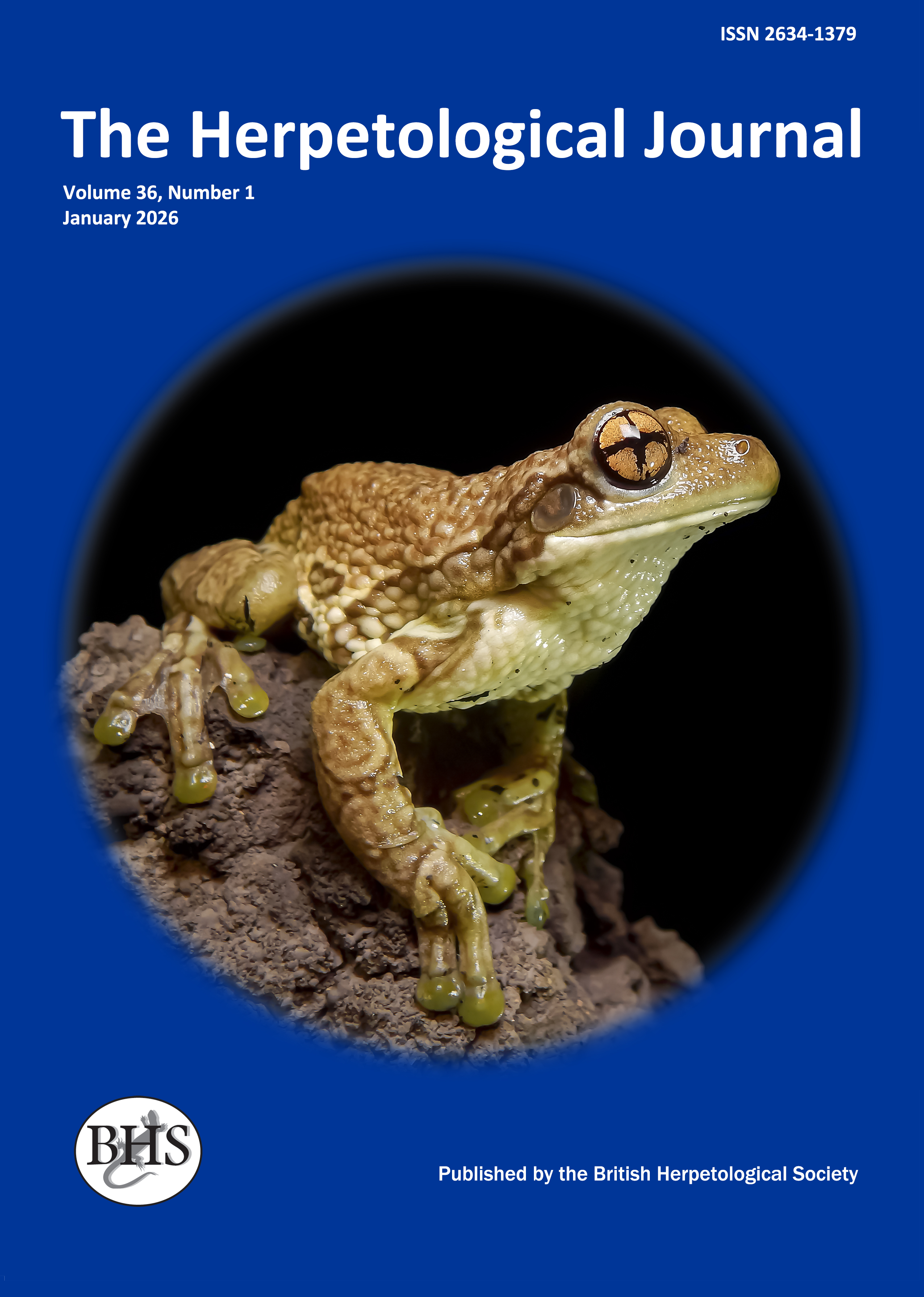
The Herpetological Journal
The Herpetological Journal is the Society's prestigious quarterly scientific journal. Articles are listed in Biological Abstracts, Current Awareness in Biological Sciences,Current Contents, Science Citation Index, and Zoological Record.
ISSN 0268-0130
2023 Impact Factor for the Herpetological Journal is 1.1, with the Journal sitting just below Quartile 2 in Zoology, at percentile 46.9
pdf 01.Effects of aquatic and terrestrial habitats on the skin microbiome and growth rate of juvenile alpine newts Ichthyosaura alpestris
1516 downloads
Open Access
DOI: https://doi.org/10.33256/32.2.5158
pp. 51-58
Author: Christopher J. Michaels
Abstract: Cutaneous bacterial communities can be crucial in modulating amphibian-pathogen interactions, but are highly sensitive to environmental conditions. Many amphibians, in particular salamandrid newts, may inhabit aquatic or terrestrial habitats after metamorphosis. These different conditions can alter the cutaneous bacterial communities of animals and so affect both the susceptibility of individuals to disease and their potential to transmit pathogens to others. Furthermore, different environments may influence the fitness of individuals through impacts on growth rates. I investigated the impact of aquatic and terrestrial environments on the cutaneous bacterial communities and growth rates in the alpine newt (Icthyosaura alpestris). This species is invasive in the UK and has been reported as carrier of amphibian pathogenic chytrid fungus. I show that aquatic animals, although growing faster, present less diverse communities, lacking in species that inhibit Batrachochytrium dendrobatidis (Bd) in vitro. My data suggest that aquatic and terrestrial phases in amphibians may influence their susceptibility to disease and I suggest that this likely impacts the way in which pathogens, especially Bd, spread in the environment.
Keywords: Amphibians; cutaneous bacterial communities; microbiomes; Bd; captivity, Batrachochytrium dendrobatidis, mutialistic bacteria, ex situ conservation

